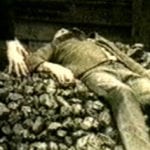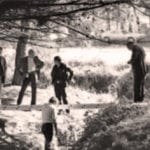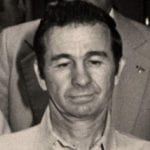 Travel
Travel  Travel
Travel  Creepy
Creepy 10 Haunted Places in Alabama
 History
History Top 10 Tragic Facts about England’s 9 Days Queen
 Food
Food 10 Weird Foods Inspired by Your Favorite Movies
 Religion
Religion 10 Mind-Blowing Claims and Messages Hidden in the Bible Code
 Facts
Facts 10 Things You Never Knew about the History of Gambling
 Weird Stuff
Weird Stuff 10 Cool and Creepy Facts about Collecting Tears
 Humans
Humans The Ten Most Lethal Gunslingers of the Old West
 Misconceptions
Misconceptions 10 Phony Myths and Urban Legends That Just Won’t Die
 History
History 10 Amazing Roman Epitaphs
 Travel
Travel Top 10 Religious Architectural Marvels
 Creepy
Creepy 10 Haunted Places in Alabama
 History
History Top 10 Tragic Facts about England’s 9 Days Queen
Who's Behind Listverse?

Jamie Frater
Head Editor
Jamie founded Listverse due to an insatiable desire to share fascinating, obscure, and bizarre facts. He has been a guest speaker on numerous national radio and television stations and is a five time published author.
More About Us Food
Food 10 Weird Foods Inspired by Your Favorite Movies
 Religion
Religion 10 Mind-Blowing Claims and Messages Hidden in the Bible Code
 Facts
Facts 10 Things You Never Knew about the History of Gambling
 Weird Stuff
Weird Stuff 10 Cool and Creepy Facts about Collecting Tears
 Humans
Humans The Ten Most Lethal Gunslingers of the Old West
 Misconceptions
Misconceptions 10 Phony Myths and Urban Legends That Just Won’t Die
 History
History 10 Amazing Roman Epitaphs
10 Disturbing Facts About Britain’s Creepiest Unsolved Murder
In 1987, a private eye was murdered in South London. The case seemed open-and-shut, but no one has ever been convicted of the murder. Over almost 20 years, the investigation into the killing has shone a light into the dark underbelly of modern London, from endemic police corruption to a criminal enterprise at the country’s largest newspaper to the very highest levels of power in the world’s greatest city.
10The Murder

Sydenham is an unassuming district of South London, the sort of place that tourists don’t visit but where lots of people actually live. On March 10, 1987, a private investigator named Daniel Morgan was in the area to have a few drinks at the Golden Lion pub. At around 9:00 PM, Morgan left the pub to walk back to his BMW. He was found in the parking lot shortly afterward, with an axe buried in his face.
The killing was clearly premeditated: The handle of the axe had been carefully wrapped in elastoplast to improve grip and help avoid leaving fingerprints. Yet it was also extraordinarily vicious, with the killer slamming the axe into Morgan’s head four times. The final blow was so brutal that the coroner had to get help to remove the axe from Morgan’s cheekbone. The detective’s watch had been stolen, and one of his pockets was torn open. However, his other pocket still contained credit cards and £1,000 in cash, making theft unlikely as a motive.
There was one obvious suspect. On the night of the murder, Morgan had been drinking with Jonathan Rees, his partner in Southern Investigations, the detective agency they had cofounded. Rees had invited Morgan to the Golden Lion, and the pair were known to be on bad terms. Morgan was seen taking notes during his meeting with Rees, but these weren’t found on his body, leading investigators to suspect they were taken from the pocket that had been torn open.
There was one final detail about the murder: It took place within the district covered by Catford police station. But no one thought that was significant at the time.
9The Investigation

As the case advanced, detectives from Scotland Yard became increasingly inclined to regard Rees as the prime suspect. They were particularly interested to learn the reason for the pair’s falling out. A few months before the murder, Rees had agreed to protect a transfer of cash for Belmont Car Auctions. He didn’t tell Morgan about the job and the two security guards he hired were his brothers-in-law. The trio were simply supposed to take £18,000 in cash and deposit it in the night safe at a bank.
According to Rees, when he arrived at the bank, the night safe had been glued shut. Surprisingly unconcerned by this, Rees dropped his brothers-in-law off and took the cash to his house to hold until the morning. But when he stepped out of the car an unseen attacker sprayed chemicals in his face and stole the cash. Morgan didn’t believe this story and accused Rees of stealing the money himself. To make matters worse, Belmont Car Auctions agreed and sued Southern Investigations. Since Southern didn’t have insurance, Morgan was on the hook for half the costs of the lawsuit and any eventual payout. He was furious.
So far, things seemed straightforward. But as the investigation progressed, detectives began to suspect that attempts to build a case against Rees were being deliberately sabotaged by elements within the Metropolitan Police. Suspicion particularly fell on a detective at Catford police station named Sidney Fillery.
8The Case Is Sabotaged
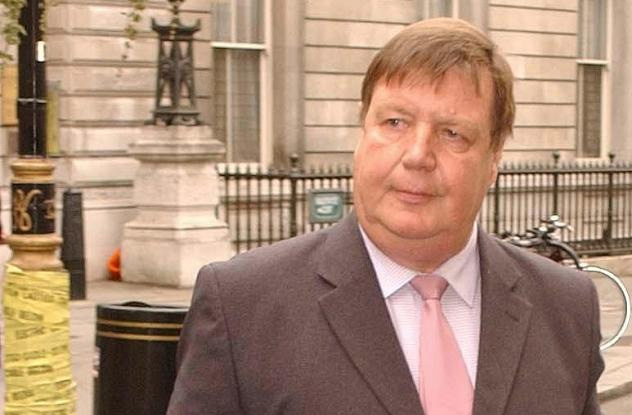
Detective Sergeant Sid Fillery was an extraordinarily unpleasant man, with a reputation for corruption, drunkenness, and framing suspects. He was also addicted to child pornography, to the point that he later kept a stack of it in his office drawer. Yet in the late ‘80s, he was a senior detective at Catford police station and was assigned to the Morgan murder case at a matter of course.
This was a mistake, since it later emerged that Fillery had been a close friend of both Morgan and Jonathan Rees. In fact, the trio had been seen drinking with several other Catford officers in the Golden Lion just 24 hours before the murder. A fight broke out among the group at one point, although the exact cause remains unclear.
Fillery alone conducted the initial interview with Rees after the murder. And although Rees was already a key suspect, Fillery decided there was no need to have his clothes or car forensically tested. He also declined to arrest Rees or secure the office of Southern Investigations. Rees was subsequently seen removing garbage bags full of files from the office. When Fillery eventually did search the office, he allegedly removed a file related to Belmont Car Auctions that was never logged as evidence and subsequently disappeared.
Fillery’s actions were so blatant that senior figures within the Metropolitan Police came to believe that the investigation was being deliberately undermined. Detective Superintendent Douglas Campbell was quoted saying that Fillery had “ripped the guts out of the case.” Fillery was dropped from the Morgan murder and was even arrested for obstructing the course of justice, but the charges had to be dropped for lack of evidence.
Shortly afterward, Sid Fillery resigned from the Metropolitan Police on health grounds and took over Daniel Morgan’s old job as Jonathan Rees’s partner.
7The Inquest
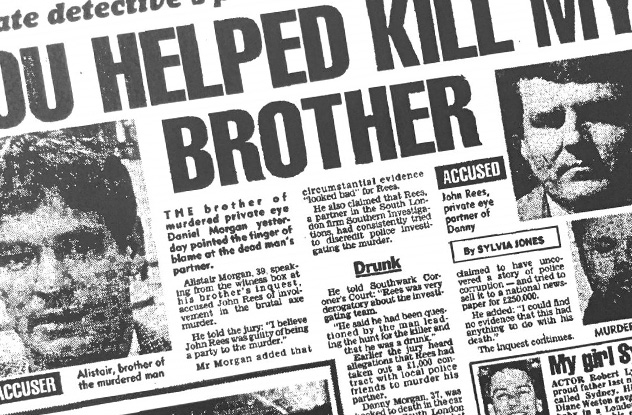
In 1988, the coroner’s inquest into Daniel Morgan’s death was held. The testimony was not favorable to Rees, with one witness even claiming that he had talked about planting drugs in the car of a police officer working on the case. But the most remarkable testimony came from Kevin Lennon, who had worked as an accountant for Southern Investigations. According to Lennon, Rees hated his partner and was planning to have friends in the police bring drunk-driving charges against Morgan and revoke his license. This would seriously hinder his ability to work as a private eye, perhaps forcing him to leave Southern.
However, this plan apparently didn’t work out, and Morgan never had his license revoked. According to Lennon, Rees then decided to kill Morgan and boasted that he could get police officers from Catford station to do the job. In Lennon’s account, Rees said that “if they didn’t do it themselves the police would arrange for some other person over whom they had some criminal charge pending to carry out Daniel’s murder.” He added that it was vital that the murder be carried out within the jurisdiction of Catford station, so that the corrupt officers there could obstruct the investigation.
Unsurprisingly, the inquest returned a verdict of unlawful killing, and Rees was charged with murder. However, the case was later dropped due to lack of evidence, and Rees was released. Senior police figures blamed Fillery, saying that his actions had made bringing charges extremely difficult. This was true, but blaming Fillery alone didn’t give the whole story—-the problem was far worse than one rogue officer.
6The Network Deepens

In fact, Jonathan Rees’s contacts with the police went far beyond Sid Fillery. In the late 1980s, corruption was rampant within London’s Metropolitan Police, and Southern Investigations sat right at the center of one of the largest networks of criminality. The agency’s activities under Morgan and Rees are not well documented, but after Fillery replaced Morgan, Southern became involved in drug-smuggling and money-laundering. But the agency’s main profit came from its work as a hub for police corruption.
Most prominently, Rees and Fillery sold information. For example, someone under criminal investigation could hire Southern to obtain the confidential police records on the case. Or a local drug dealer could have one of Southern’s contacts run his name through the police computer and see if he was suspected of anything. The bribes needed to secure these services weren’t even that expensive—-one officer had a standing agreement to monitor the Met’s computer system for any mention of Rees or Fillery. In return, Rees paid him £100 a month.
Southern’s network of corruption also included former police officers working for the tax and customs agencies. Contacts at two major banks could supply the account details of anyone who banked there. Rees was recorded boasting that he could have his friends in customs plant evidence on a rival of one of his clients. In other cases, Rees and Fillery just handed evidence on rival drug dealers to their contacts in the Met, who obligingly arrested them.
But these activities were small potatoes compared to the work Southern did for its biggest clients: the largest and most powerful newspapers in Great Britain.
5The Murdoch Connection
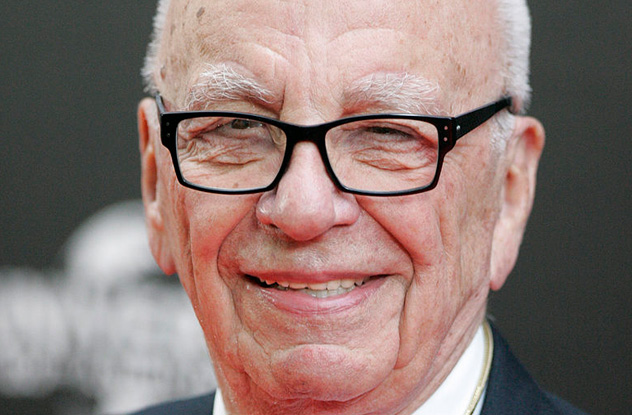
Southern’s ability to obtain confidential police information was much appreciated by the infamous UK tabloids. The agency’s best customer was The News Of The World, then the best-selling newspaper in the English-speaking world. The jewel in the crown of Rupert Murdoch’s News International, the News Of The World actually maintained a stable of private eyes who regularly broke the law on its behalf. For example, Glenn Mulcaire specialized in hacking into voicemail messages, while others conned their way into confidential records at banks or phone companies.
Southern bribed police officers. For example, when the notorious murderer Kenneth Noye was arrested, Rees and Fillery were able to give the News Of The World the complete report on how he was captured, as well as the exact time he would arrive at court. Police officers assigned to protection duty were bribed for gossip on the politicians and royals they were supposed to be protecting. When the TV presenter Jill Dando was murdered, Rees reassured the News Of The World that one of his “bestest friends” was part of the investigation. He even gave the Sunday Mirror the mortgage details of the governor of the Bank of England.
The newspapers were appropriately grateful, and the News Of The World alone paid Southern over £166,000 in a single year. Southern’s key contact at the paper was an editor named Alex Maranchuk, who jealously guarded his role as the link to Rees. He had good reason to do that, since he seems to have inflated the bills Southern submitted to the paper and then pocketed the extra cash himself. This gave Southern leverage over him. In one conversation, Rees was recorded warning Marunchak that his bosses could easily “get
4The Media Interferes In A Murder Case

Even though the charges had been dropped in 1988, Rees and Fillery remained the main suspects in Morgan’s murder. However, their contacts in the police and media allowed them to stay ahead of any investigation. Rees regularly bribed officers to hand him any new files on the case and was heard complaining on the phone that an informant told him corruption investigators “keep talking about the
And it appears that the News Of The World was willing to help stymie corruption investigations. When Chief Superintendent Dave Cook took charge of the case, he received a warning that Alex Marunchuk had been heard promising to “sort him out.” A few days later, someone called Surrey police and tried to obtain Cook’s home address. The next week, Cook was terrified by the appearance of two strange vans, which lurked outside his home and followed him and his wife around. When he investigated, the vans turned out to belong to the News Of The World.
Cook then went straight to the paper’s editor, Rebekah Brooks, a close friend of Tony Blair and David Cameron. Cook told her that Marunchuk was out of control and interfering with a murder investigation. Brooks did nothing. Neither did Scotland Yard, evidently because senior officers didn’t want to take on News International.
Rees’s connection to Marunchuk and the News Of The World might be even more sinister. Witnesses have suggested that Morgan had approached his contact at a Sunday newspaper about exposing police corruption shortly before his death. It has never been proven that the newspaper in question was the News Of The World, but the timing of Morgan’s death means that there has been a great deal of speculation about whether Rees or Catford’s corrupt police officers might have been tipped off about the expose.
3The Ghost Squad
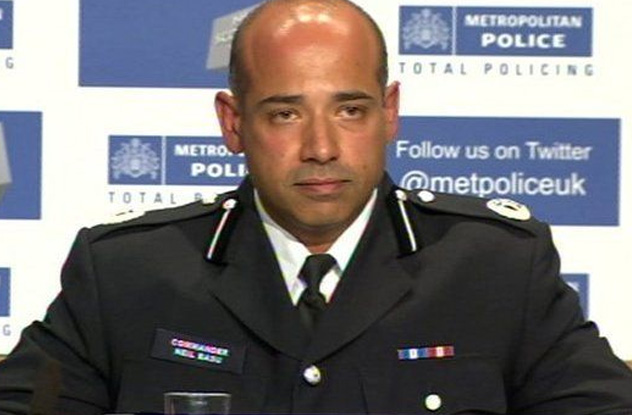
By the ‘90s, several scandals meant that the Metropolitan Police were under significant pressure to stamp out corruption. In response the Met set up an anti-corruption unit known as the “Ghost Squad,” which was so top-secret that the officer running it had to fake throat cancer to explain his mysterious disappearance from other police work. One of the first cases the new unit looked into was the network of corruption around Rees and Fillery. In 1999, the Ghost Squad successfully bugged the offices of Southern Investigations.
The bug ran for months, as the Ghost Squad collected reels of damning evidence against Southern and the officers it had bribed. However, in September, the bug caught evidence of a crime severe enough that the police had to move. A businessman named Simon James was in a bitter custody battle with his wife Kim and hired Southern to plant drugs in her car. Southern also bribed a police officer to claim that Kim had links to drug dealers. Rather than allowing Kim James to be imprisoned, the Ghost Squad had to end the bugging operation and arrest everyone they could.
Jonathan Rees was sentenced to seven years in prison for trying to frame Kim James. Meanwhile, the police had uncovered Sid Fillery’s child porn habit and he was convicted of 13 counts of making indecent images of children. However, the bug had not collected proof that the pair were involved in the Daniel Morgan murder. Neither are currently in prison. When Jonathan Rees was released from prison in 2005, the News Of The World quickly rehired him on a salary of £150,000 per year.
2The Hacking Scandal
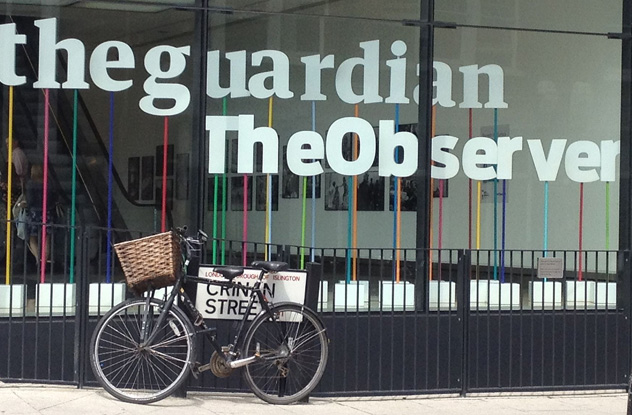
Despite the arrogance of rehiring Rees, things were starting to unravel for News International. In 2006, the detective Glenn Mulcaire was arrested for hacking into the voicemail messages of Prince William and other members of the royal family. The newspaper insisted that the hacking had been commissioned by one rogue employee (royal editor Clive Goodman) and that no one else at the paper knew about it. Editor Andy Coulson (who had rehired Rees in 2005), nobly resigned, declaring his horror that hacking could have happened without his knowledge. He subsequently became communications director for Prime Minister David Cameron.
At first, the sacrifice of Goodman seemed to have worked, and the hacking scandal faded from public attention. However, Guardian reporter Nick Davies continued to pursue the story and gradually revealed that phone hacking was endemic at the newspaper, with thousands of victims, including senior politicians. Lawsuits mounted, and Andy Coulson was forced to resign from the government in 2010. The next year, the Guardian alleged that the News Of The World had hacked into the phone of murdered schoolgirl Milly Dowler. In the ensuing uproar, advertisers pulled out and the News Of The World, the biggest and most powerful paper in Britain, was closed down by Rupert Murdoch.
Andy Coulson was sentenced to 18 months in prison, and several his subordinates also served time. News International was accused of hanging Coulson and other editors out to dry to protect Rebekah Brooks and Rupert Murdoch’s son James. Both are still employed by the Murdoch media empire.
1The Case Collapses Again

In 2009, Rees, Fillery, and Glenn and Gary Vian were formally charged with Morgan’s murder. However, the prosecution seemed overwhelmed by the complexity of the case and dropped the charges against Fillery in 2010. In 2011, the charges against Rees and the Vian brothers were also dropped, since the prosecution couldn’t guarantee it had disclosed all relevant evidence to the defense.
In fact, the prosecution had disclosed over 250 crates of evidence on the case, totaling around 750,000 documents (almost all of them uncomputerized). However, in 2010, another 18 crates of evidence were discovered in an abandoned building. In 2011, another four crates of evidence turned up. The failure to disclose this evidence was considered fatal to the case, and it was decided to drop the charges. Morgan’s family, understandably, were furious.
In 2014, Rees, Fillery, and the Vian brothers launched a £4 million lawsuit against the Metropolitan Police, claiming that their prosecution was corrupt and unwarranted. Daniel Morgan’s murder currently remains officially unsolved.
![10 Creepiest Photos Of Victims Taken By Serial Killers [DISTURBING] 10 Creepiest Photos Of Victims Taken By Serial Killers [DISTURBING]](https://listverse.com/wp-content/uploads/2018/09/Regina-Kay-Walters-featured-2-150x150.jpg)

